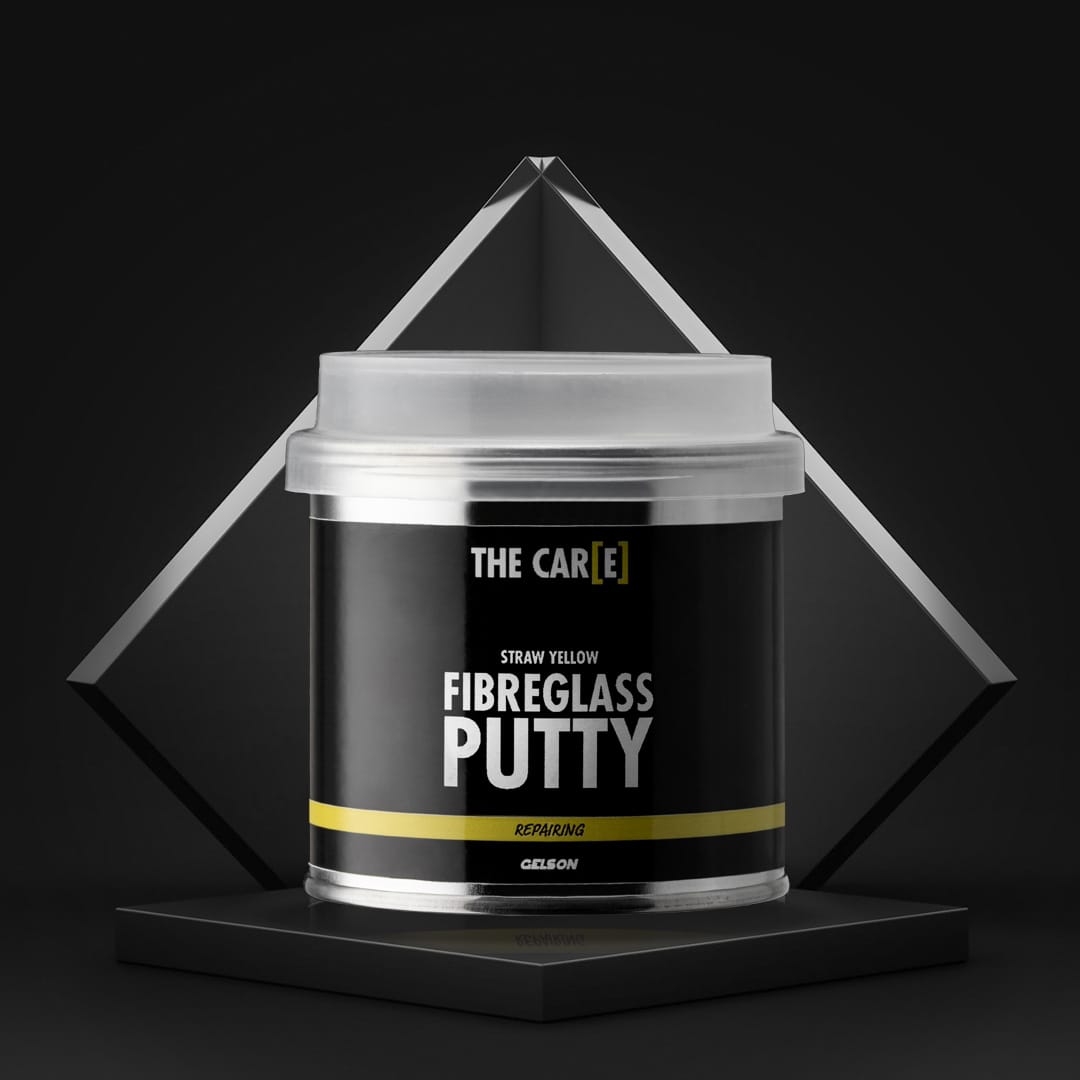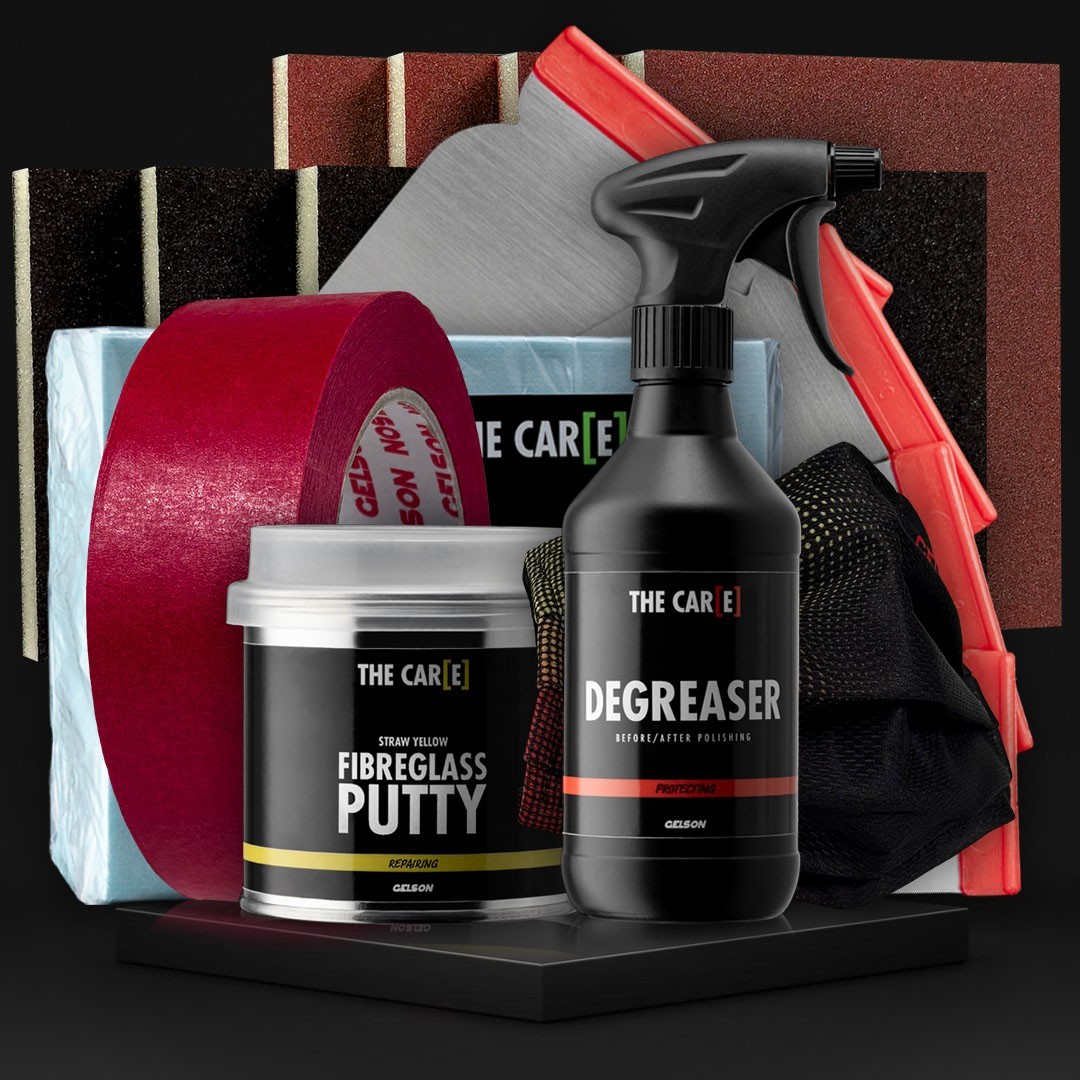How to apply fiberglass stucco?
Applying fiberglass filler to automotive or other fiberglass surfaces requires care and precision to achieve a smooth, durable result. Here's how you can do it simply and accurately at home.
Fiberglass putty is used on fiberglass surfaces and in various fields of application such as, for example, the nautical one. It is the useful and indispensable tool for filling, correcting and leveling imperfections, drafts and damage, even of large thicknesses. It is, in fact, a layerable and excellently resistant filling putty that allows anyone to carry out small do-it-yourself repairs.
Obtain the best quality products and accessories needed for the small repair:
- Fiberglass Filler : Be sure to choose a filler specifically for repairing fiberglass surfaces
- Steel spatulas or plastic or metal scraper : for applying, leveling and smoothing the stucco
- Sandpaper of various grits : from coarse to fine grit to prepare the surface and smooth the stucco
- Face protection mask : to protect you from stucco dust
- Protective gloves : made of vinyl or similar professional materials to protect the hands
- Clean microfibre cloths : to clean the surface and grout residues
Procedure:
- Surface Preparation : Make sure the fiberglass surface is clean and free of grease, dirt and debris. You can use a degreasing detergent such as Degreaser and TNT Cloth non-woven cloths to clean it and then rinse and dry well
- Preparing the stucco : Follow the manufacturer's instructions for mixing your fiberglass stucco. Usually, it is a two-component putty like The Care Fiberglass Putty with the catalyst already included in the package to make it harden correctly. It is advisable to mix the stucco well before use and take small quantities from the can at a time using steel spatulas both to combine the catalyst by mixing it and rubbing two spatulas against each other to make the mixture uniform, and to spread the stucco. correctly on the surface to be treated
- Applying putty : Use putty knives like those included in the convenient Putty Knife set of 4 different sized putty knives or a scraper to apply an even layer of putty to the surface. Try to spread the material evenly, filling any cracks or dents. Work quickly, and in small quantities at a time, as grout processing time can be limited. If you need to apply multiple layers, let each layer dry completely before applying another. Fiberglass Putty is designed to be layered without forming cracks or bubbles and to be finished with a finishing putty such as Standard Putty White to obtain a perfectly level and smooth surface
- Leveling and Shaping : After applying the fiberglass filler, use the putty knife or scraper to shape and level the surface so it is as smooth as possible. You can slightly moisten the tool to facilitate processing. Try to get a smooth surface with no dips or bumps
- Drying : Allow the grout to dry completely. Drying time varies depending on the type of grout and environmental conditions. Follow the manufacturer's instructions and make sure drying is complete and perfect
- Sanding : Once the putty is completely dry, use sandpaper of various grits to smooth the surface. Start with a coarse grit to remove any imperfections and then proceed with finer grits to achieve a smooth finish
- Cleaning : After sanding, clean the surface thoroughly and make sure to remove all residues of filler and dust. You can use a degreaser such as Degreaser with TNT Cloth non-woven cloths or a green microfibre cleaning cloth such as Microfibre Cloth green
- Finish : If desired, apply a smooth finishing putty such as Standard Putty white or a porous one such as Standard Putty gray for a flawless finish and follow with an appropriate primer on the repaired surface to protect it and prepare it for painting
By following these steps carefully, and choosing quality fillers such as those from The Care collection, you will be able to apply fiberglass filler effectively to fiberglass surfaces, including vehicles, sheet metal, spoilers, side skirts, rear wings, gelcoat and other surfaces.
Read also:
Related Products


